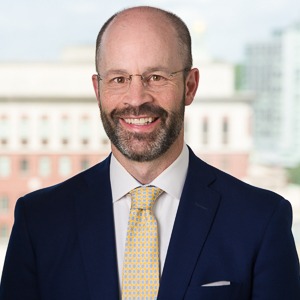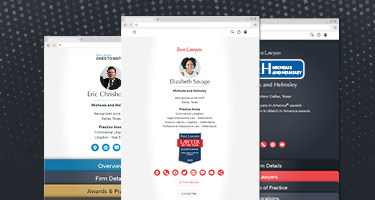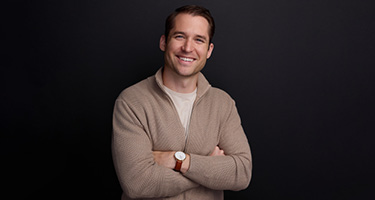The New York State Human Rights Law and New York City Human Rights Law (the “Human Rights Laws”) impose civil liability on New York employers who fail to promote an employee or hire a prospective employee based on discriminatory considerations such as race, sex, religion, or disability. But do these state and municipal laws allow suit by non-resident plaintiffs who do not yet live or work in New York? When presented with this question last year, the Second Circuit Court of Appeals certified this untested point of state law to the New York Court of Appeals. In a recent decision, the New York Court of Appeals answered yes – a failure to promote or hire sufficiently impacts an out-of-state plaintiff to allow them to sue under the Human Rights Laws.
The Second Circuit Asks: Syeed v. Bloomberg L.P., 58 F.4th 64 (2d Cir. 2023)
In the underlying case, Plaintiff Syeed, an Asian American female, worked as a reporter at Defendant Bloomberg L.P.’s Washington D.C. bureau office. She applied for a promotion to a United Nations reporting job at Bloomberg’s New York City bureau. Bloomberg turned down the plaintiff and hired a man with allegedly less experience for the job. Comments made by her managers and editors led the plaintiff to believe that Bloomberg denied her the United Nations job because of her race and sex. Accordingly, she filed suit in New York State Supreme Court for violations of the Human Rights Laws arising out of Bloomberg’s alleged discriminatory failure to hire or promote her.
Bloomberg removed the case to the Southern District of New York (“SDNY”) and moved to dismiss the plaintiff’s complaint under Federal Rule of Procedure 12(b)(6) for failure to state a claim. Recognizing that courts in the district were split on the issue, the Syeed court dismissed the case, holding that the plaintiff “could not adequately plead that she had felt the impact of Bloomberg’s discrimination in New York City or State” because she was a nonresident the entire time. On appeal, the Second Circuit, noting that there was no on-point circuit precedent, reserved decision and certified the following question to the New York Court of Appeals:
Whether a nonresident plaintiff not yet employed in New York City or State satisfies the impact requirement of the New York City Human Rights Law or the New York State Human Rights Law if the plaintiff pleads and later proves that an employer deprived the plaintiff of a New York City- or State-based job opportunity on discriminatory grounds.
The Court of Appeals Answers: Syeed v. Bloomberg L.P., —N.E.3d—, 2024 N.Y. Slip. Op. 01330 (N.Y. 2024)
In answering the Second Circuit’s question, the Court of Appeals began its analysis with its previous decision applying the Human Rights Laws to nonresidents, Hoffman v. Parade Publications et al. There, a plaintiff working in Georgia sued the defendant for age discrimination under the Human Rights Laws because it made the decision to fire him in New York City. The Court of Appeals held that the plaintiff failed to state a claim under the Human Rights Laws because “nonresidents of the city and state must plead and prove that the alleged discriminatory conduct had an impact within those respective boundaries.” Syeed, 2024 N.Y. Slip. Op. 01330 (quoting Hoffman, 15 N.Y.3d 285, 289 (2010)). A nonresident can satisfy the impact test by either: “(1) working in New York; or (2) establishing that the challenged conduct had some impact on the plaintiff within the respective New York geographic boundaries.” Syeed, 2024 N.Y. Slip. Op. 01330. The Hoffman plaintiff failed this impact test because he was neither a resident nor working in New York and so could not allege that the discriminatory termination had any impact in the state.
As part of its certification, the Second Circuit asked how the Hoffman impact rule applied to the instant case. First, the Court of Appeals noted that the application of the impact test is different in a discriminatory termination case compared to a failure to hire or promote the case. Unlike the termination of a nonresident, like in Hoffman, denying a nonresident a New York-based job denies him or her the chance to live and work in the state or city. Thus, “[t]he prospective employee personally feels the impact of a discriminatory refusal to promote or hire in New York City or State, because that is where the person wished to work (and perhaps relocate) and where they were denied the chance to do so.” This interpretation of the impact rule also follows the Human Rights Laws’ statutory language, which the Court of Appeals held did not intend “to give New York employers a license to discriminate against nonresident prospective employees.”
Accordingly, the Court of Appeals answered the Second Circuit in the affirmative – it is possible for a nonresident prospective employee to sufficiently allege discriminatory impact against them under the Human Rights Laws.
Takeaway
The ball is now back in the Second Circuit’s court, where it will rule on whether the plaintiff sufficiently alleged a discriminatory impact based on her prospective New York employer’s alleged actions. With this question of law resolved and the split amongst SDNY courts mended, employment litigators may begin seeing more Human Rights Law cases brought by nonresidents proceed past the motion to dismiss stage – especially in federal courts. Employers and their counsel should be mindful that post-Syeed, nonresidents may have viable claims for discrimination if they apply for positions or promotions in New York City and state.
















